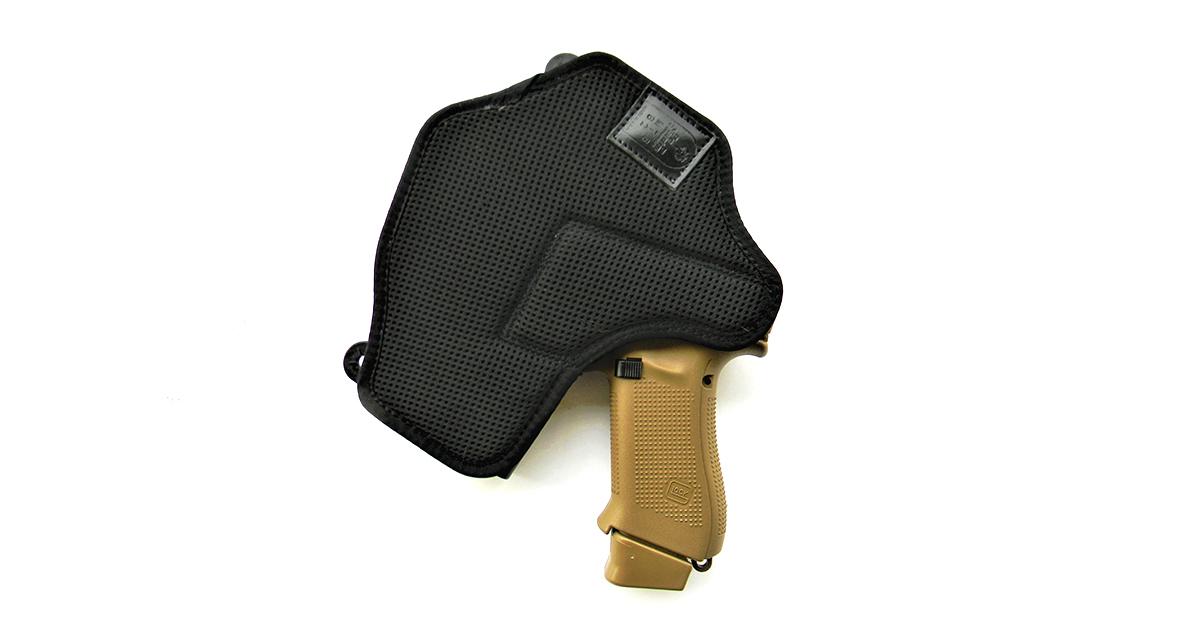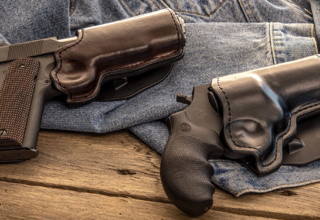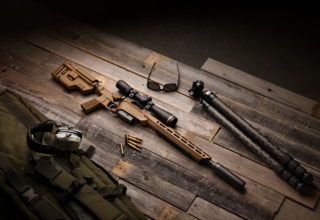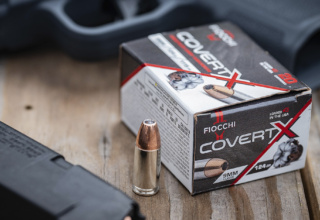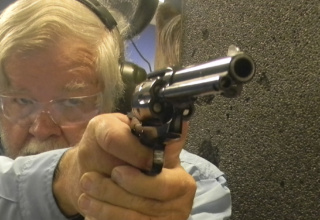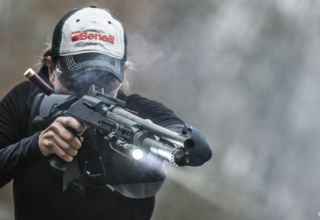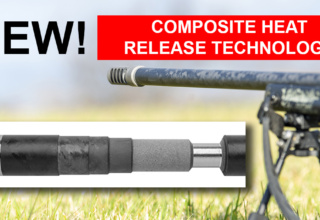We spend a lot of time considering our EDC handgun. We scrutinize over size, weight, caliber, action, etc. This is good. Our EDC handgun must fit and feels perfectly in hand; however, choosing the right holster for that sidearm is equally important.
by Bob Campbell
Choosing a holster is as essential as selecting a quality handgun and ammunition. There are holsters for field use, open carry, and concealed carry. The basic parameters of quality and appropriate design for the mission always apply. Whichever you choose, obtain quality and the holster will serve well for years.
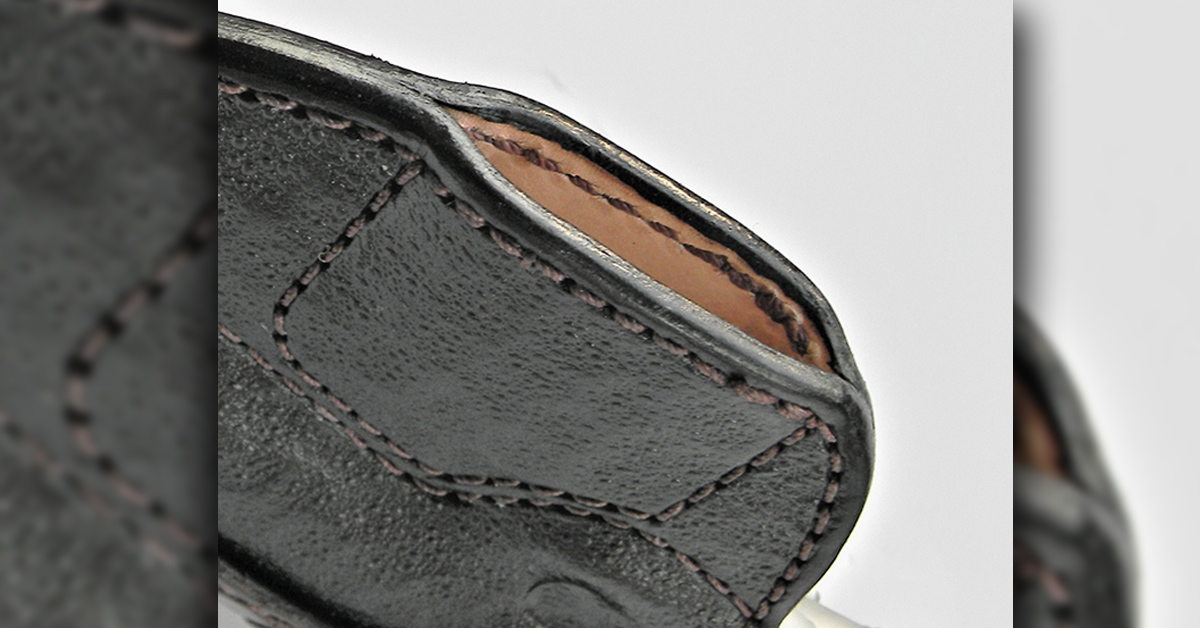
A cheap holster will become a chafing nuisance. The first step will be choosing how you will carry the pistol. Do you drive most of the day? Are you seated often or standing more? Do you feel comfortable with an inside-the-waistband carry? Does your lifestyle usually accommodate a pulled-out sport shirt or covering garment?
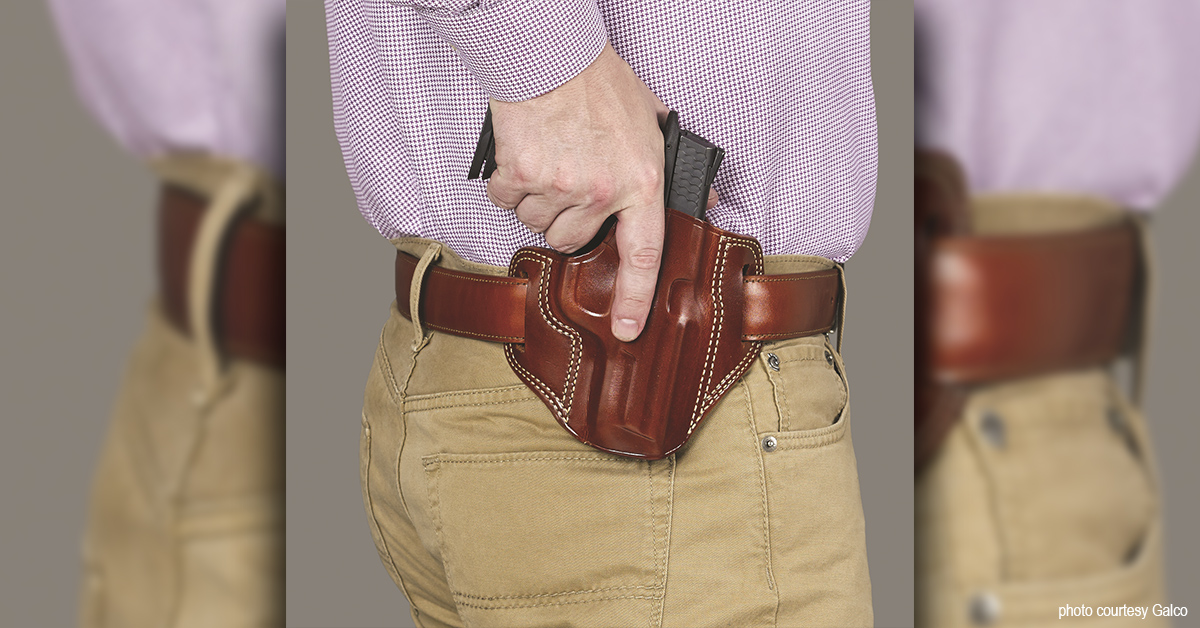
By placing a fake gun or triple-checked unloaded handgun into the belt line and considering the draw and comfortable carry, you will know the best carry mode for your circumstance. Point-of-hip carry is a terrible choice for concealed carry; disregard it. I am not comfortable with appendix carry, while some are. The default strong-side holster is a good choice for everyone. A good reason should exist for leaving behind strong side carry and moving to another carry option.
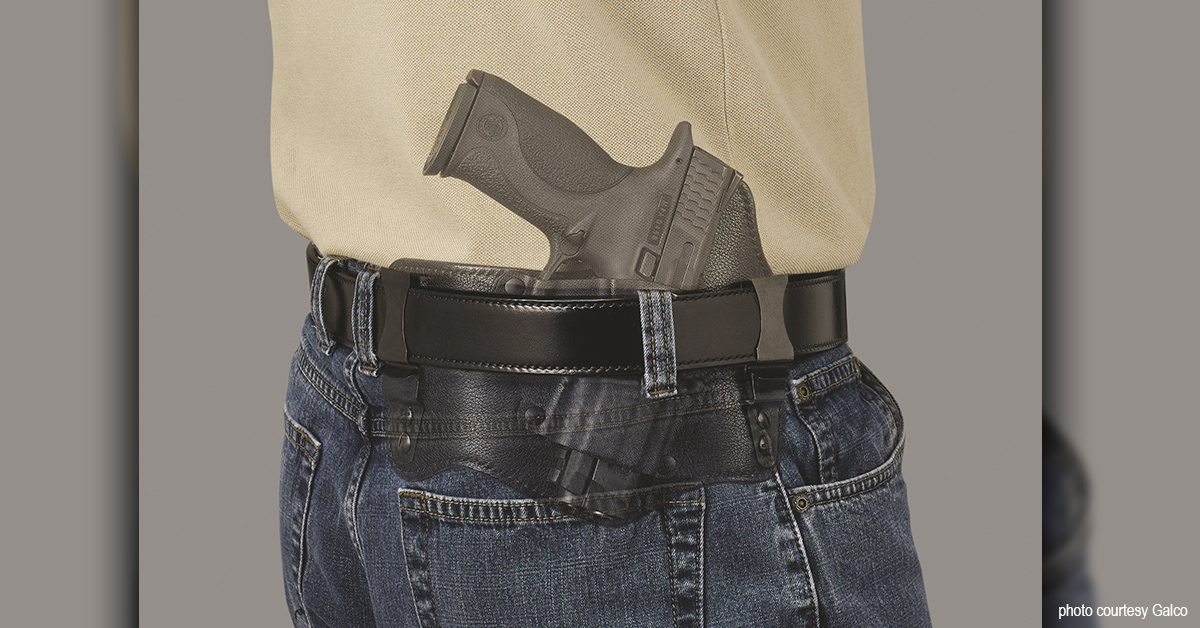
Study until you have a good understanding of drop and cant. Drop is related to how the holster rides with the belt above or below the belt. Most makers offer a choice in how deep in the pants the IWB holster rides. Ride or rise refers to a high-ride, allowing an excellent, sharp draw. Galco, as an example, offers a high-ride Summer Comfort holster for revolvers that provide a sharp draw. The forward or rear rake relates to the muzzle forward or muzzle canted to the rear. A slight rear rake — handle tilted forward — is ideal for most applications.
Retention is at the top of the list.
The holster must secure the handgun by retaining a grip on the long bearing surfaces, slide, trigger guard, or cylinder. The shooter must consistently reach the handgun and quickly draw the piece. This must be true for carrying on the belt just behind the hip and a sharp draw from the kidney position.
A quality gun belt is the foundation of concealed carry. The handgun must be in the same position every time the user draws the gun. No shifting about the belt is permitted. You should be able to jump up and land hard on your feet without dislodging the handgun. Holstering the handgun with one hand after drawing is demanded.
Comfort is subjective, but quality isn’t subjective when something comes apart, so quality and durability are serious concerns. Is the holster made from good materials? Is the Kydex thick and service grade or cheap plastic? Is a leather holster properly cut and tanned and is the edging properly glued? Does it fit the handgun properly? Is the leather holster properly stitched and double-stitched in high-stress areas? Is the holstering welt reinforced? Does the holster incorporate a sweat guard to protect the body from gouging and the handgun from perspiration? A quality holster will feature a strong spine supporting the rest of the body.
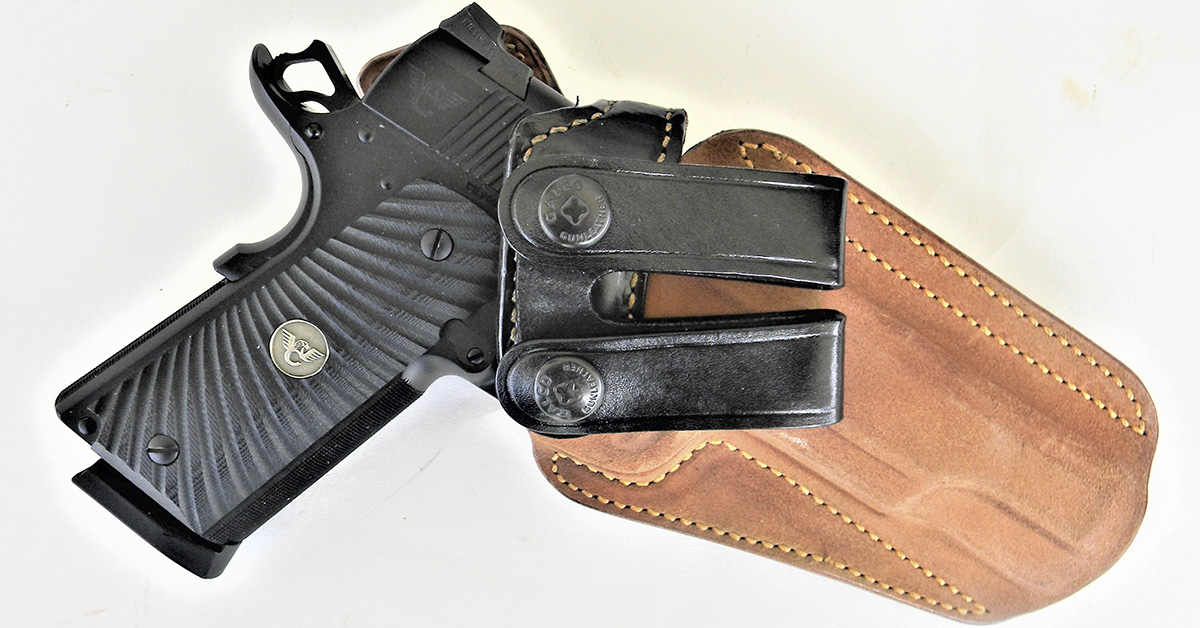
It isn’t just the holster but the mounting hardware that’s important. A strong belt attachment often features a single tunnel loop, but others feature dual loops by design. Mounting hardware needs to be durable and must fit correctly. A tunnel loop is a single-long loop. This is ideal for a leather holster. The Avenger type features a tunnel loop under the holster that cinches the holster tightly to the belt and an additional loop that maintains the holster’s rigidity. The holster’s interior doesn’t need to be waxed, and it adds cost to it, but a waxed interior is a good option.
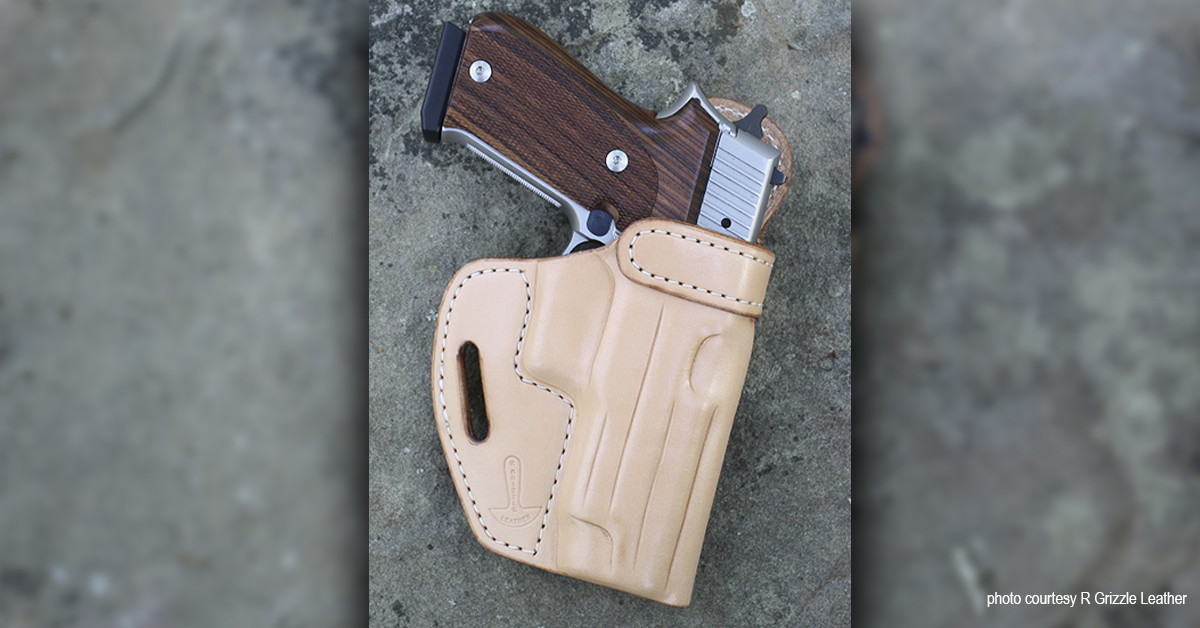
There has been some concern voiced over finish wear on the handgun. This is ridiculous. A personal defense handgun should not be laid in the safe. Modern SIG Nitron finishes, Springfield Armory-Kote, and GLOCK‘s hard finish wear slowly. A few wear spots on the muzzle are typical after years of use with a Kydex holster. Leather also wears a handgun. An adequately fitted (boned/molded) holster will exhibit good retention by fit.
Of course, some wear is inevitable. Finish degradation isn’t a concern. A little oil prevents corrosion even if most of the finish is worn. This type of wear would require many years of use.
Very few custom makers still use boning. With this process, a smooth bone presses wet leather into a good fit over the handgun or a dummy gun. Molding is often accomplished with a hot press and works well. A properly boned holster demands a modest break-in involving several dozen presentations from the holster. When the break-in period is over, you have an excellent balance of speed and retention.
Between Kydex and leather, both work well in most applications. Some things may be done with one that cannot be done with the other. Leather is usually rated as the most comfortable material because it is softer and flexes. This is a massive deal for concealed carry. Leather requires a plastic or steel reinforcement in the mouth of the holster to prevent the holster from collapsing after the handgun is drawn. Otherwise, we would have to loosen our trousers and pull the holster mouth open to re-holster the handgun once drawn.
This is accomplished in several ways with a steel insert, plastic insert, or often enough with hard-waxed molding reinforcing the holster mouth. Leather holsters are two-piece affairs cut from a pattern. The two pieces are glued together, and the holster is then hand-finished. This is called edging. Some makers have a rough, uneven edging while others feature a seamless polish. The smoother finish takes more time and is part of the cost of a quality holster. Kydex must be smooth with a good finish and no extrusions. The fit is often good, and as a result, Kydex holsters exhibit a sharp draw.
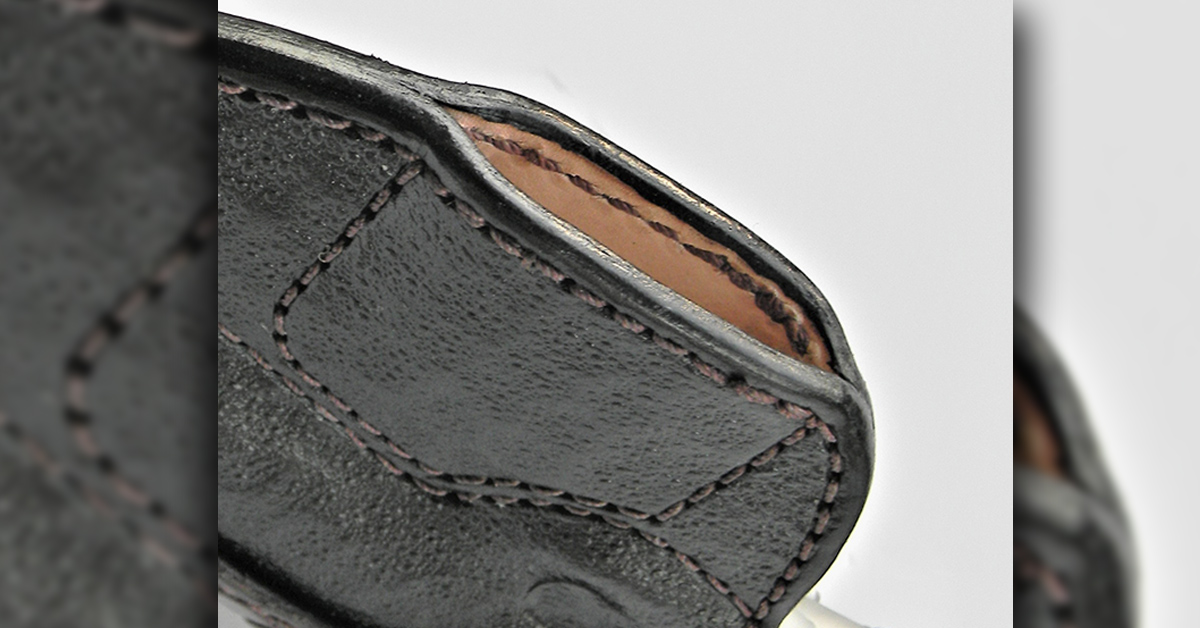
A hybrid holster usually has leather and Kydex components, with the leather as backing and the gun sheath being Kydex, but the term is also applied to leather holsters with a Kydex paddle. A hybrid will have a parallelogram backing that may be a rectangle or a square, although some feature more irregular geometry.
The DeSantis Infiltrator Air is a practical design, offering reasonable adjustment and a comfortable backing. This backing provides greater comfort in concealed carry as the holster features padded neoprene. While we must always wear an undergarment when carrying concealed and not allow the handgun to touch bare skin, some seem to get by breaking this rule. The Infiltrator Air is a good kit incorporating improvement into a proven system.
Adjustment is important. The inside-the-waistband holster should maintain a ride, placing the holster lip above the belt line. How high above the belt line depends on the handle size, tilt, and length of the shooter’s arms. In general, a revolver handle rides higher over the belt line. The shape of the backing may affect the ride. Some very comfortable holsters also have a long footprint. I prefer a smaller width. A mark of quality is that the sweat guard is rigid and stays in place, never interfering with drawing or re-holstering the handgun. The pistol’s handle should be offset enough that a good firing grip may be quickly acquired. A soft, cheap, floppy holster doesn’t make the grade on this count.
Ectomorph, mesomorph, and endomorph body types work better with different holsters. A secure, comfortable kit matters, and a tall thin shooter may like behind-the-hip carry. Many of us like a cross-draw when driving or seated. Some give up too much for comfort and adopt holsters with a limited draw speed.
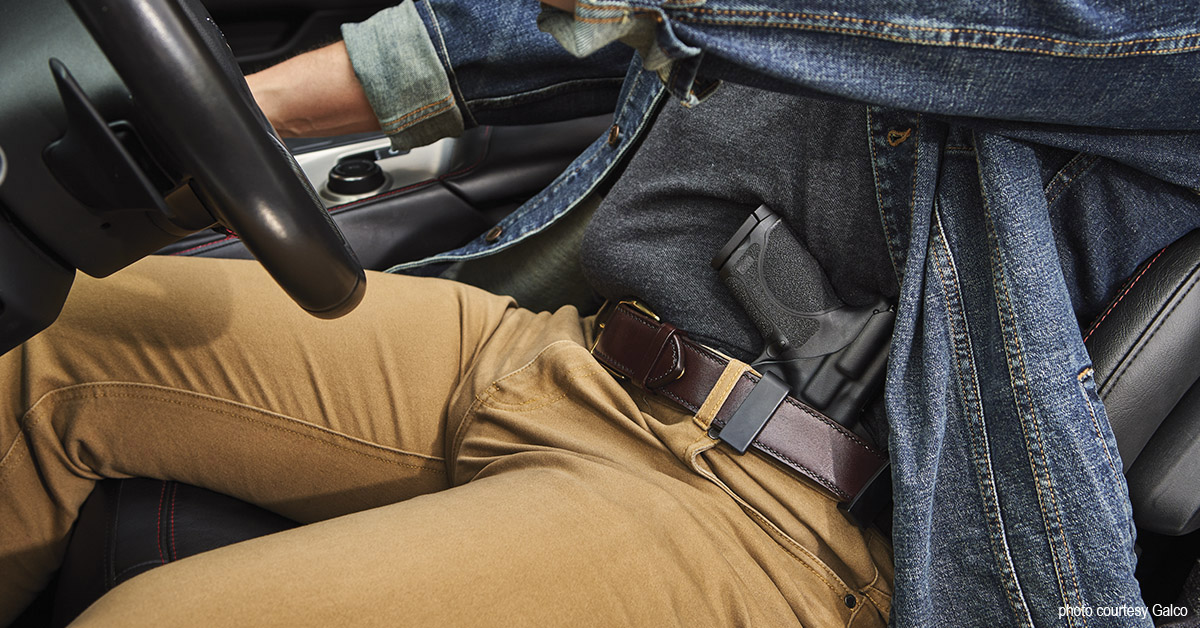
A balance of speed, access, and retention is needed. Some inside the waistband and tuckable holsters are designed to spread the weight out. Since they cannot be seen, this width isn’t a drawback. Others are as compact as possible. The larger footprint is less likely to shift on the belt. This is food for thought. It depends on how much belt space you have. Some have less than thirty inches of belt space to accommodate the holstered handgun, spare magazine, or gunload, and perhaps a cell phone case. Most of us have thirty-six to forty inches of belt space, some a little more.

Practice allocating belt space. The gear cannot interfere with accessing a wallet or folding knife. A good quality, carefully chosen holster accomplishes this. Every consideration is essential. One of the least important areas of concern is the final finish of a leather holster. Vegetable, pine tanning, and a waxed natural finish are all viable. Kydex is available in several color schemes. In the end, the choice is in the hands of the user. Stay off the bargain racks at chain stores. Purchase a good quality holster that gets the job done with a balance of speedy access and security.

